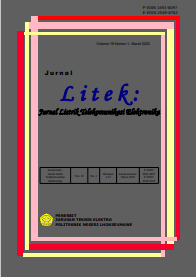Different Techniques of Multiple Power Point Tracking for Photovoltaic Systems
DOI:
https://doi.org/10.30811/litek.v19i1.21Keywords:
PV systems, MPP, MPPT Techniques, MPPT algorithmsAbstract
Understanding in such way the maximum available power generated by the photovoltaic (PV) array varies with the weather is critical for improving system efficiency by encouraging the PV system to operate at that maximum power point (MPP). Therefore, to maintain optimum power functioning at all irradiance levels and temperatures, a Maximum Power Point Tracking (MPPT) system is necessary. MPPT methods have been developed and implemented in a number of studies. The accuracy, convergence speed, ease of hardware implementation, PV dependency, number of necessary sensors, which are significantly differ across these systems. The first technique to be introduced was a single MPPT technique. However, as it works independently, it was unable to achieve several of the required characteristics. Afterwards, the merger techniques of multiple MPPTs and the combination of both (single and multiple MPPTs’ techniques) due to integrate the benefits of each algorithm while removing their limitations. Comparing and surveying MPPT algorithms in general took a significant amount of time. Despite this, there is a limited literature examining the combination techniques towards the multiple MPPT techniques and the single one. This paper presents the work and uses MATLAB/Simulink platform to simulate it. It is based on a study that contrasts single MPPT techniques with different combinations, namely the constant voltage (CV) method, the perturb and observe (P&O) method and the combination of both (CV+P&O), in order to validate MPPT's better performance.
Downloads
Downloads
Published
Issue
Section
License
Copyright (c) 2024 Jurnal Litek : Jurnal Listrik Telekomunikasi Elektronika

This work is licensed under a Creative Commons Attribution-ShareAlike 4.0 International License.
Jurnal Litek : Jurnal Listrik Telekomunikasi Elektronika is licensed under Attribution-ShareAlike 4.0 International.






